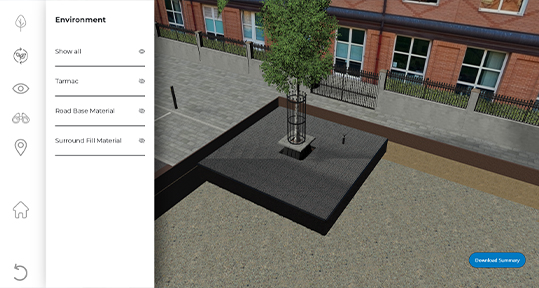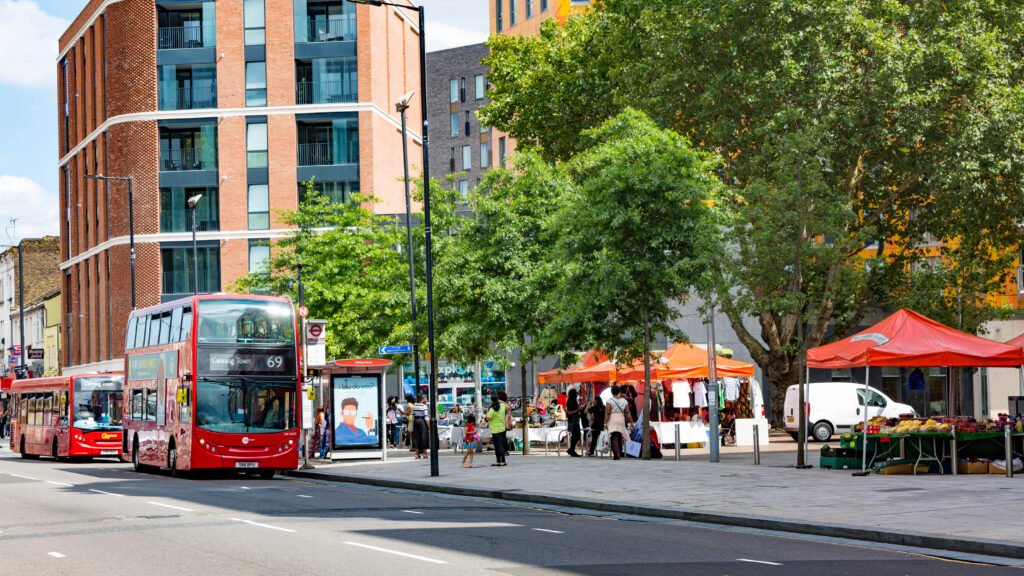Swinton Square, located in the heart of Manchester, was predominantly a concreted area suffering from urban decay, lack of green space, and a deteriorating environment.
To address these challenges, a host of companies including Manchester City Council, Salford Council, Groundwork Greater Manchester, The Ignition Project, and Avison Young, as well as funding and commercial support from the European Union and the UIA, initiated a green infrastructure project called ‘Greening Swinton Square’, aimed at creating a sustainable and environmentally friendly urban oasis.
Project
Location
Contractor
Landscape Architect
Swinton Square, located in the heart of Manchester, was predominantly a concreted area suffering from urban decay, lack of green space, and a deteriorating environment.
To address these challenges, a host of companies including Manchester City Council, Salford Council, Groundwork Greater Manchester, The Ignition Project, and Avison Young, as well as funding and commercial support from the European Union and the UIA, initiated a green infrastructure project called ‘Greening Swinton Square’, aimed at creating a sustainable and environmentally friendly urban oasis.
Project
Location
Contractor
Landscape Architect
Project
Location
Contractor
Landscape Architect
A series of public consultations and workshops were conducted to gather input and ideas from residents and businesses, ensuring that the project aligned with the community’s needs and aspirations. Key elements of the green infrastructure plan included:
- Green spaces
- Sustainable Drainage Systems (SUDS)
- Tree Canopy Cover
- Green Roofs and Walls
The implementation phase faced various challenges, including budget constraints, coordination of multiple stakeholders, and the need for thorough urban planning to accommodate the new green features. However, these challenges were overcome through effective communication, creative problem-solving, and securing funding through public-private partnerships and government grants.
A series of public consultations and workshops were conducted to gather input and ideas from residents and businesses, ensuring that the project aligned with the community’s needs and aspirations. Key elements of the green infrastructure plan included:
- Green spaces
- Sustainable Drainage Systems (SUDS)
- Tree Canopy Cover
- Green Roofs and Walls
The implementation phase faced various challenges, including budget constraints, coordination of multiple stakeholders, and the need for thorough urban planning to accommodate the new green features. However, these challenges were overcome through effective communication, creative problem-solving, and securing funding through public-private partnerships and government grants.
GreenBlue worked closely with Nick Linder, Landscape Architect at Groundwork Greater Manchester to secure the SuDS elements within the scheme. The SuDS product of choice for the rain gardens was the bioretention plug and play solution: The HydroPlanter. It’s modular characteristics with pre-calculated hydrological performance statistics mean that specification and design is very simple for any given catchment area. Installation was fast, simple, and offered significant savings to alternative methods.
The revitalisation of the area has had numerous positive impacts on the environment and the community:
Improved Air Quality: These measures can help combat air pollution, absorb carbon dioxide, and improve overall air quality, leading to healthier living conditions for shoppers and residents.
Biodiversity: By restoring natural habitats and green spaces you can encourage the return of native plant and animal species. This increase in biodiversity not only supports local ecosystems but also contributes to the resilience of the environment.
Social Well-Being: Creating recreational spaces and improved public amenities can enhance community engagement, foster social interactions, and promote a sense of belonging among residents, thereby improving overall social well-being.
Increased Property Value: Enhancing the appeal and attractiveness of an area results in increased property values, benefiting homeowners, and attracting potential investors.
New Job Opportunities: Regen projects typically require significant labour and investment, leading to the creation of new job opportunities in construction, design, landscaping, and other related fields. Additionally, when an area becomes more attractive for businesses and residents, it can stimulate economic growth and lead to further job creation.
Community Pride and Identity: When an area is improved and transformed, residents often develop a stronger attachment to their community, fostering a shared commitment to maintaining and improving the area further.
The implementation of blue-green infrastructure in Swinton Square, Manchester, exemplifies how a collaborative approach to urban design and planning encompasses, community engagement, and its stakeholders, to support the transformation of neglected urban spaces into sustainable, vibrant, and resilient environments.
The success of this project extended far beyond just the physical environment. It cwill enhance the overall quality of life for residents and contribute to a more sustainable and prosperous future. The project will set a precedent for future urban developments in the area that prioritises environmental sustainability and community well-being.
Navigate to the centres very own platform to what events are taking place and the latest news in Swinton Square.
GreenBlue worked closely with Nick Linder, Landscape Architect at Groundwork Greater Manchester to secure the SuDS elements within the scheme. The SuDS product of choice for the rain gardens was the bioretention plug and play solution: The HydroPlanter. It’s modular characteristics with pre-calculated hydrological performance statistics mean that specification and design is very simple for any given catchment area. Installation was fast, simple, and offered significant savings to alternative methods.
The revitalisation of the area has had numerous positive impacts on the environment and the community:
Improved Air Quality: These measures can help combat air pollution, absorb carbon dioxide, and improve overall air quality, leading to healthier living conditions for shoppers and residents.
Biodiversity: By restoring natural habitats and green spaces you can encourage the return of native plant and animal species. This increase in biodiversity not only supports local ecosystems but also contributes to the resilience of the environment.
Social Well-Being: Creating recreational spaces and improved public amenities can enhance community engagement, foster social interactions, and promote a sense of belonging among residents, thereby improving overall social well-being.
Increased Property Value: Enhancing the appeal and attractiveness of an area results in increased property values, benefiting homeowners, and attracting potential investors.
New Job Opportunities: Regen projects typically require significant labour and investment, leading to the creation of new job opportunities in construction, design, landscaping, and other related fields. Additionally, when an area becomes more attractive for businesses and residents, it can stimulate economic growth and lead to further job creation.
Community Pride and Identity: When an area is improved and transformed, residents often develop a stronger attachment to their community, fostering a shared commitment to maintaining and improving the area further.
The implementation of blue-green infrastructure in Swinton Square, Manchester, exemplifies how a collaborative approach to urban design and planning encompasses, community engagement, and its stakeholders, to support the transformation of neglected urban spaces into sustainable, vibrant, and resilient environments.
The success of this project extended far beyond just the physical environment. It cwill enhance the overall quality of life for residents and contribute to a more sustainable and prosperous future. The project will set a precedent for future urban developments in the area that prioritises environmental sustainability and community well-being.
Navigate to the centres very own platform to what events are taking place and the latest news in Swinton Square.






